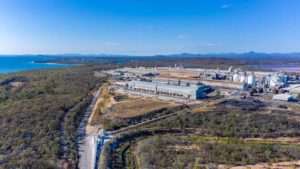WWF-Australia, Climate-KIC Australia and the UTS Institute of Sustainable Futures have just launched the Business Renewables Centre-Australia– a local version of the US Rocky Mountain Institute initiative which has been very successful in supporting the growth of corporate renewable energy power purchase agreements (RE PPAs) signed with solar and wind farms.
The goal of the BRC-A is to deliver 5GW of renewable energy PPAs by 2030, about 20 per cent of NSW’s electricity load.
Our market analysis shows RE PPAs are already a significant part of the market – keeping the industry growing as utility power purchase agreements slow.
The Growth of RE PPAs
In a short time, RE PPAs have become a significant source of new renewable energy funds and market capacity.
Since the end of 2016, renewable energy PPAs have grown relative to other market segments – often outstripping utility PPAs in recent quarters.
The growth in renewable energy PPAs is part of the diversification of the market for large-scale renewable energy in Australia. Not so long ago, a retailer PPA linked to the Renewable Energy Target (RET) was the only game in town – but there are now four market segments:
– Utility PPAs: long-term agreements signed by electricity retailers with renewable energy projects;
– Merchant projects: renewable energy projects sell their output directly to the wholesale market;
– State government auctions: the use of taxpayer funds to underwrite power purchase agreements with renewable energy projects (note: government agencies contracting with renewable energy projects to procure electricity and/or Large Generation Certificates (LGCs) for their own needs is defined as a corporate RE PPA);
– Corporate RE PPAs:long-term agreements between organisations and renewable energy projects for the supply of electricity and/or LGCs.
Whilst there is some variability from quarter to quarter, RE PPAs have become an important market segment remarkably quickly. As utility PPAs slow with the achievement of the RET target, Corporate RE PPAs will become more important until there is a replacement for the RET.
Who are the leaders?
The RE PPA market is still at an early stage – but there are some interesting trends.
Victoria is not only leading the way with the size of its renewable energy auctions, it is also the leading state for RE PPAs.
In terms of sectors, there is a quite a spread – but the leading sectors are manufacturing, state and local governments and the education sector.
This reflects the different drivers for doing RE PPAs. It is likely energy price relief and certainty is primarily driving the manufacturing deals, whilst sustainability is the primary driver for the government and education sectors.
The spread of deals reflects the role of large users across a range of sectors as first movers.
RE PPAs are overwhelmingly driving investment in new projects
Our analysis found that 82% of PPAs so far have been with new projects. This is attractive to project developers, as the PPA are crucial for them with securing project Finance and Investment.
Solar or Wind?
So far it is a fairly even split on technology preferences. Wind historically has been more viable at utility scale, but solar farms have caught up in recent years
 We have included the South Australian Government PPA with the Aurora Solar Thermal project as a Corporate PPA rather than Government PPA, as it was publically stated that the PPA is for the purposes of meeting State Government energy consumption.
We have included the South Australian Government PPA with the Aurora Solar Thermal project as a Corporate PPA rather than Government PPA, as it was publically stated that the PPA is for the purposes of meeting State Government energy consumption.
Non-Utility PPAs & Procurement on the rise
Until recently, investment in new wind and solar projects, has been driven by government policy, the Renewable Energy Target (RET). Non-Utility PPAs have now emerged as a source of investment s.
We analysed the capacity of PPAs and project commitments per quarter between Q4 2016 to Q3 2018, and found Non-Utility PPAs have grown and now outstripped Utility PPAs and merchant projects.
 This may change if national policy creates investment certainty for utility PPAs – but RE PPAs may prove to be a steadier source of investment driven by other underlying factors such as organisational sustainability targets and energy risk management.
This may change if national policy creates investment certainty for utility PPAs – but RE PPAs may prove to be a steadier source of investment driven by other underlying factors such as organisational sustainability targets and energy risk management.
The share between market segments will no doubt wax and wane but RE PPAs are now established as an important source of large-scale renewable energy investment in Australia.
Chris Briggs and Jonathon Prendergast are technical directors at the Business Renewables Centre & Institute for Sustainable Futures, University of Technology.














